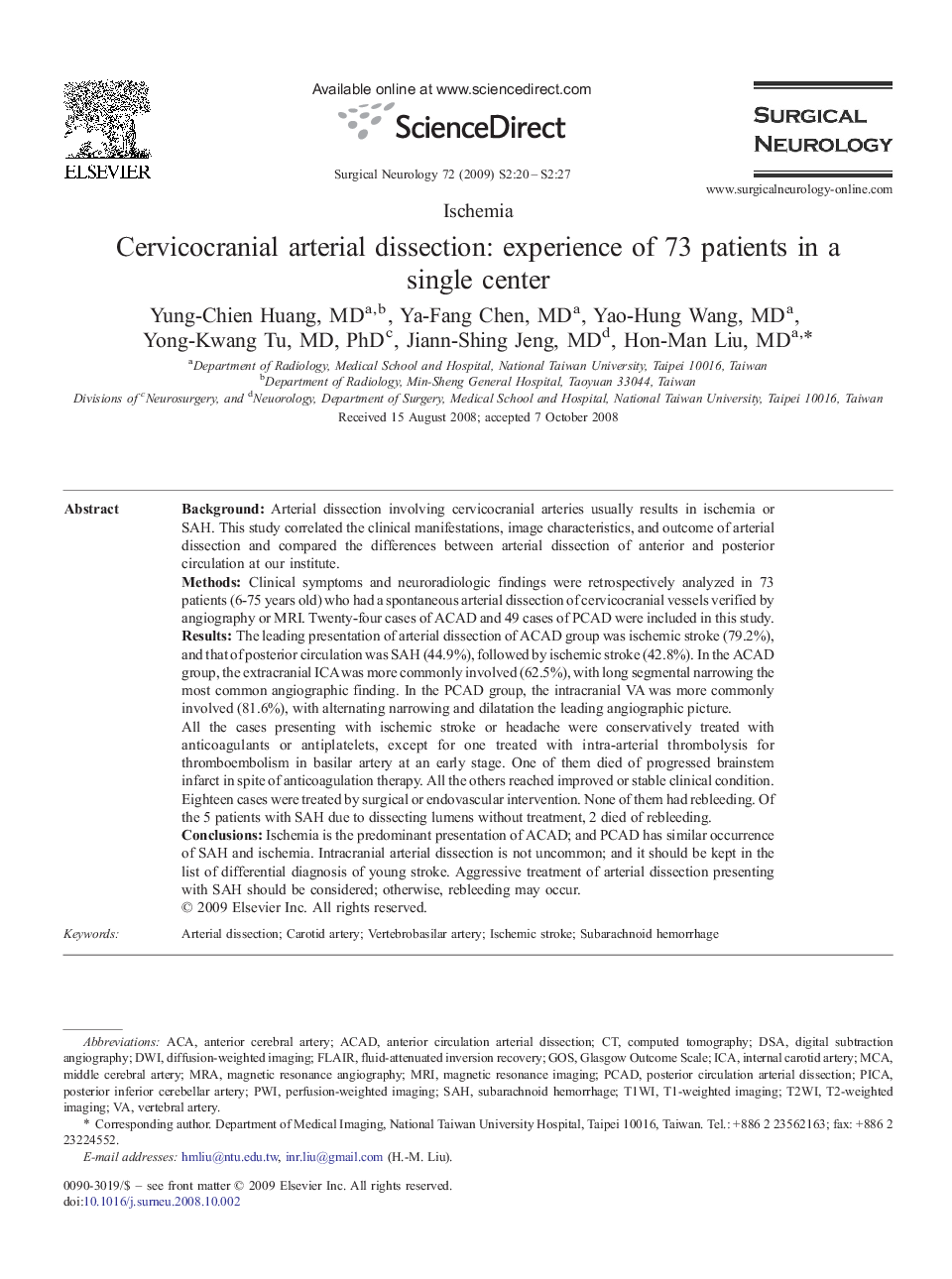| کد مقاله | کد نشریه | سال انتشار | مقاله انگلیسی | نسخه تمام متن |
|---|---|---|---|---|
| 3092165 | 1190509 | 2009 | 8 صفحه PDF | دانلود رایگان |

BackgroundArterial dissection involving cervicocranial arteries usually results in ischemia or SAH. This study correlated the clinical manifestations, image characteristics, and outcome of arterial dissection and compared the differences between arterial dissection of anterior and posterior circulation at our institute.MethodsClinical symptoms and neuroradiologic findings were retrospectively analyzed in 73 patients (6-75 years old) who had a spontaneous arterial dissection of cervicocranial vessels verified by angiography or MRI. Twenty-four cases of ACAD and 49 cases of PCAD were included in this study.ResultsThe leading presentation of arterial dissection of ACAD group was ischemic stroke (79.2%), and that of posterior circulation was SAH (44.9%), followed by ischemic stroke (42.8%). In the ACAD group, the extracranial ICA was more commonly involved (62.5%), with long segmental narrowing the most common angiographic finding. In the PCAD group, the intracranial VA was more commonly involved (81.6%), with alternating narrowing and dilatation the leading angiographic picture.All the cases presenting with ischemic stroke or headache were conservatively treated with anticoagulants or antiplatelets, except for one treated with intra-arterial thrombolysis for thromboembolism in basilar artery at an early stage. One of them died of progressed brainstem infarct in spite of anticoagulation therapy. All the others reached improved or stable clinical condition. Eighteen cases were treated by surgical or endovascular intervention. None of them had rebleeding. Of the 5 patients with SAH due to dissecting lumens without treatment, 2 died of rebleeding.ConclusionsIschemia is the predominant presentation of ACAD; and PCAD has similar occurrence of SAH and ischemia. Intracranial arterial dissection is not uncommon; and it should be kept in the list of differential diagnosis of young stroke. Aggressive treatment of arterial dissection presenting with SAH should be considered; otherwise, rebleeding may occur.
Journal: Surgical Neurology - Volume 72, Supplement 2, December 2009, Pages S20–S27